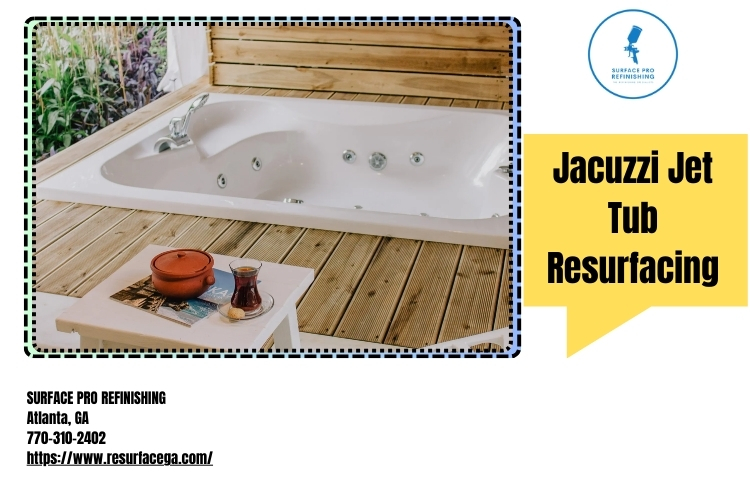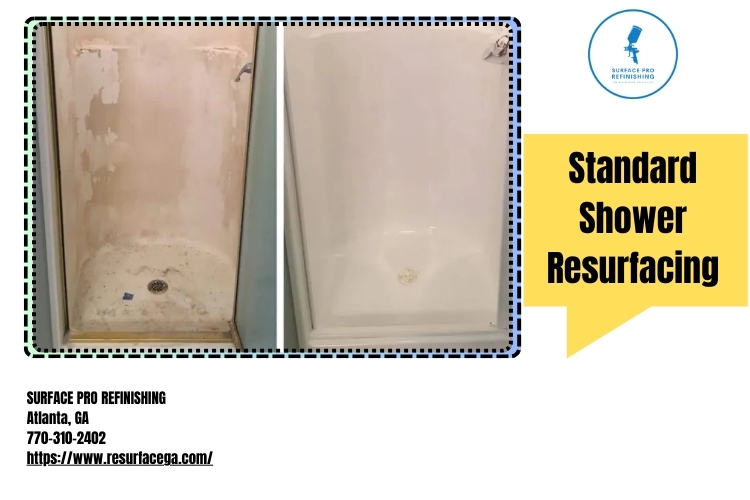Introduction
When it comes to home renovations, bathrooms are often the first space that homeowners consider updating. Among the most significant features in any bathroom is the bathtub. Over time, bathtubs can wear down, become outdated, or simply no longer fit your style. As an Atlanta homeowner, you may find yourself faced with two primary options when it comes to addressing a worn or unattractive bathtub: resurfacing or replacing it entirely. This article will explore Bathtub Resurfacing vs. Replacement: What Atlanta Homeowners Need to Know, providing you with insights and guidance to make an informed decision.
Understanding Bathtub Resurfacing
What Is Bathtub Resurfacing?
Bathtub resurfacing (also known as reglazing or refinishing) is a process designed to restore the surface of your existing bathtub. This method involves applying a new coating to the tub's surface, which can effectively camouflage scratches, stains, and discoloration. By choosing this option, homeowners can achieve a new look without the hassle and expense of a complete replacement.
The Resurfacing Process Explained
The bathtub resurfacing process typically includes several steps:
Preparation: The tub is thoroughly cleaned and prepped for the new coating. Repairing Damage: Any chips or cracks are filled in to ensure a smooth surface. Applying an Adhesive Primer: A primer coat helps the new surface bond effectively. Coating: A professional-grade finish is sprayed onto the tub. Curing: The newly coated tub needs time to cure before being used.Advantages of Bathtub Resurfacing
- Cost-Effective: Generally, resurfacing is significantly cheaper than replacing a tub. Time-Saving: The entire process usually takes only a few hours and can be completed in one day. Minimal Disruption: Since you're not undergoing major renovations, there’s less mess and disruption in your home.
Disadvantages of Bathtub Resurfacing
While resurfacing offers many benefits, there are some downsides:
- Longevity: The new surface may not last as long as a brand-new tub. Limited Repair Options: Deep cracks or extensive damage may require more than just resurfacing. Professional Skill Required: Achieving optimal results typically requires hiring a skilled technician.
Exploring Bathtub Replacement
What Is Bathtub Replacement?
In contrast to resurfacing, bathtub replacement involves removing your old tub entirely and installing a new one in its place. This option might be necessary if your existing bathtub has significant structural issues or if you're looking for completely different features.
The Replacement Process Explained
Replacing a bathtub generally entails several key steps:

Advantages of Bathtub Replacement
- Durability: A new tub typically lasts longer than a refinished one. Customization Options: You have complete freedom in selecting styles, materials, and features that suit your preferences. Improved Functionality & Safety Features: New models often come equipped with modern safety features such as slip-resistant surfaces.
Disadvantages of Bathtub Replacement
Despite its benefits, here are some drawbacks:
- Higher Cost Involved: Replacing a bathtub can be expensive due to labor costs and purchasing materials. Longer Project Duration: Depending on various factors, this process could take several days or weeks. Potential for Additional Repairs Needed: If water damage exists behind walls or under floors, additional repairs could add to costs.
Cost Comparison Between Resurfacing and Replacement
| Feature | Bathtub Resurfacing | Bathtub Replacement | |----------------------|--------------------|---------------------| | Average Cost | $300 - $600 | $1,000 - $5,000 | | Time Frame | 1 Day | Several Days/Weeks | | Lifespan | 5 - 10 Years | 15 - 30 Years | | Structural Repairs | Limited | Necessary if damaged | | Customization | Minimal | Extensive |
Deciding Factors for Atlanta Homeowners
Assess Your Budget
Before making any decisions regarding bathtub refinishing or replacement, assess your budget carefully. If you’re limited on funds but want an upgraded look quickly, resurfacing could be ideal for you.
Evaluate Your Tub’s Condition
Consider how damaged your current tub is—if it’s structurally sound with minor cosmetic issues like scratches or stains, resurfacing might suffice; however, if you discover major cracks or leaks during assessment activities, replacement becomes necessary.
Consider Your Future Needs
Are you planning on staying in your home for years? If so investing more upfront into replacing may pay off long-term versus short-term fixes that don't last as long overall.

Environmental Considerations
Eco-Friendly Benefits of Resurfacing
Resurfacing often produces less waste since you're not disposing of an entire fixture; you're merely renewing what already exists! Additionally using environmentally friendly coatings further reduces environmental impact associated with traditional replacements.
Waste Concerns With Full Replacements
Full replacements lead to discarding old tubs which must then get sent off somewhere—often resulting in excess landfill waste unless properly recycled by contractors experienced in repurposing materials when possible!
FAQs about Bathtub Resurfacing vs Replacement
How long does bathtub resurfacing last?- Typically between 5 to 10 years depending on maintenance practices post-process!
- Yes! Fiberglass tubs can also benefit from bathtub reglazing techniques similar used on porcelain varieties!
- No! Allow at least 24 hours for curing before using again; this ensures proper adhesion occurs without compromising quality results achieved during application phase!
- Most professionals offer various color options tailored specifically suited toward individual tastes ranging anywhere from classic white through bolder hues!
- Generally speaking no permits should be required unless engaging contractors potentially needing licensing verification—always double-check local regulations beforehand though just in case!
- Absolutely! Both methods provide striking transformations enhancing overall appeal within space likely boosting property value too over time!
Conclusion
When considering whether to resurface or replace your bathtub as an Atlanta homeowner, it's essential to weigh all aspects involved carefully—from cost considerations down through potential environmental impacts! Understanding both processes helps equip you better suited towards making informed choices while maintaining financial responsibility without sacrificing quality aesthetics altogether within personal living spaces enjoyed daily by loved ones alike! Remember always consult trusted professionals who specialize specifically within these services prior proceeding forward too—ensuring peace-of-mind every step along way ensures optimal outcomes achieved during renovations undertaken exhaustively throughout homes across beautiful cityscape known lovingly as Bathtub resurfacing Atlanta Atlanta!
Contact Us
SURFACE PRO REFINISHING
Location: Atlanta, GA
Phone: 770-310-2402
Website: https://www.resurfacega.com/